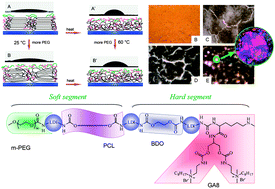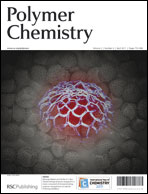Effect of PEG content on the properties of biodegradable amphiphilic multiblock poly(ε-caprolactone urethane)s
Abstract
We have recently developed a new group of cationic biodegradable multiblock poly(ε-caprolactone urethane)s bearing gemini quaternary ammonium pendant groups and methoxyl-poly(ethylene glycol) (m-PEG) end chains. In this study, to endow polyurethane with attractive amphiphilicity and good biocompatibility, and to achieve a fundamental understanding on the structure-property relationship of these polyurethanes in favor of designing and preparing new generation of polyurethanes with more attractive amphiphilicity and better biocompatibility, varying amounts of m-PEG were introduced into the polyurethane chains and the effect of PEG content on the


 Please wait while we load your content...
Please wait while we load your content...